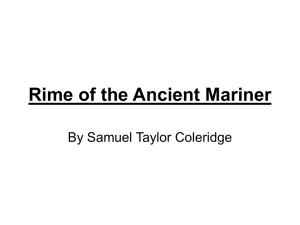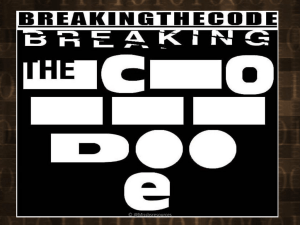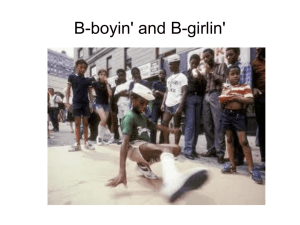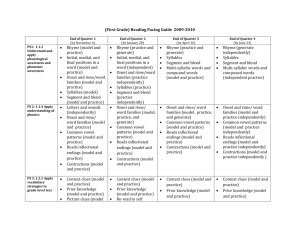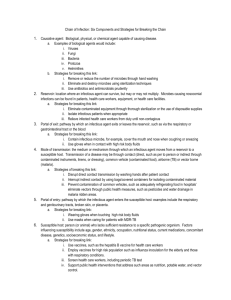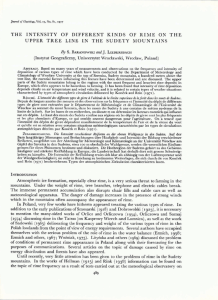Word Work: Breaking Revisited.
advertisement
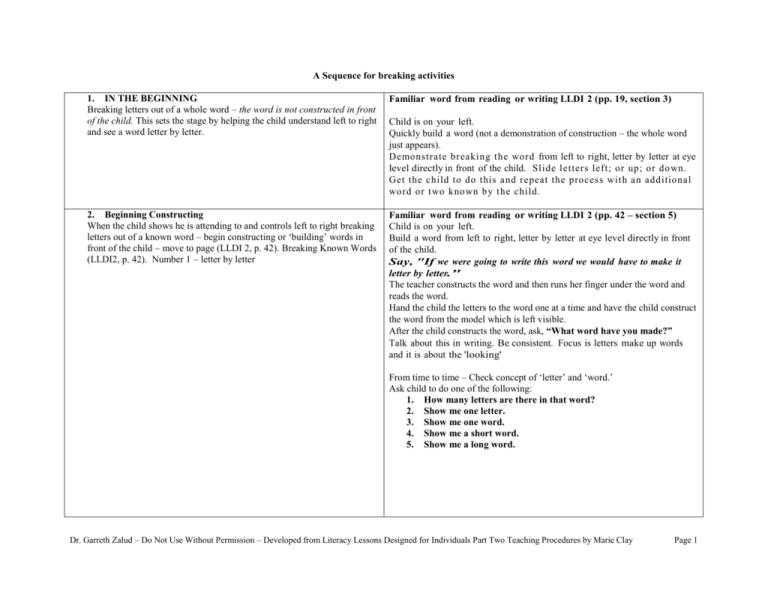
A Sequence for breaking activities
1. IN THE BEGINNING
Breaking letters out of a whole word – the word is not constructed in front
of the child. This sets the stage by helping the child understand left to right
and see a word letter by letter.
Familiar word from reading or writing LLDI 2 (pp. 19, section 3)
2. Beginning Constructing
When the child shows he is attending to and controls left to right breaking
letters out of a known word – begin constructing or ‘building’ words in
front of the child – move to page (LLDI 2, p. 42). Breaking Known Words
(LLDI2, p. 42). Number 1 – letter by letter
Familiar word from reading or writing LLDI 2 (pp. 42 – section 5)
Child is on your left.
Build a word from left to right, letter by letter at eye level directly in front
of the child.
Say, "If we were going to write this word we would have to make it
letter by letter."
The teacher constructs the word and then runs her finger under the word and
reads the word.
Hand the child the letters to the word one at a time and have the child construct
the word from the model which is left visible.
After the child constructs the word, ask, “What word have you made?”
Talk about this in writing. Be consistent. Focus is letters make up words
and it is about the 'looking'
Child is on your left.
Quickly build a word (not a demonstration of construction – the whole word
just appears).
Demo nstrate breaking the word from left to right, letter by letter at eye
level directly in front of the child. Slide letters left; or up; or do wn.
Get the child to do this and repeat the process with an additional
word or two kno wn b y the child.
From time to time – Check concept of ‘letter’ and ‘word.’
Ask child to do one of the following:
1. How many letters are there in that word?
2. Show me one letter.
3. Show me one word.
4. Show me a short word.
5. Show me a long word.
Dr. Garreth Zalud – Do Not Use Without Permission – Developed from Literacy Lessons Designed for Individuals Part Two Teaching Procedures by Marie Clay
Page 1
3. Breaking Known Words and Constructing Known Words
This helps the child see words can be taken apart letter by letter and are
constructed letter by letter.
After breaking becomes easy…Constructing Known Words (LLDI2,
p. 140). Number 1 – learning words I know
LLDI 2, p. 140 - section 13 Learning on words I know –
Focus is for child to be able to construct letter by letter known
words, from left to right easily.
Choose 2 or 3 things from the list:
1. Teacher says the word and constructs the model.
2. Or ask child to make it and hand him the letters, first to last.
3. Child mixes up his version and makes it again.
Say "Look at the word. Run your finger under it as you say it slowly"
(Child is using eyes and L-R)
Or say "Look at the word. What do you hear at the beginning?"
(Child is using ears).
To increase task difficulty, (1) Place the letters on board already
scrambled, or (2) have him find the letters from a larger group of letters or
(3) have him write the letters.
4. Another Kind of Break
When words I know becomes easy move to another kind of break. This
work is adding inflectional endings to known words. (LLDI2, p. 43).
Assemble a word quickly and add an inflectional ending
Shift to another 'kind' of break. The focus is now on endings - plurals
and inflectional endings LLDI 2, p. 43- section 5
Choose a known word 'looking' or 'going' (one syllable)
Assemble it quickly, left to right.
Ask child to watch as you run your finger left to right under it.
SAY: What's the first letter in 'look'? Can you hear the last part of
'looking'? We can take the first part away.
Demonstrate by moving 'look' to left and then bring - ing over and read
it for the child.
Have child do this and read it as a whole and as two parts.
Link this with child's reading and writing.
Dr. Garreth Zalud – Do Not Use Without Permission – Developed from Literacy Lessons Designed for Individuals Part Two Teaching Procedures by Marie Clay
Page 2
5. Consolidating – Breaking Onset and Rime
This is working with predictable letter-sound sequences. Rimes are very
stable with regard to letter and sound sequences.
(LLDI 2, p. 43). Number 3 – break known words with one syllable into
onset and rime.
When this becomes easy …
(LLDI 2, p. 142). Number 5 – Change the onset and retain the rime
(LLDI 2, p. 143). Number 6 – Retain the onset and change the rime
Breaking a known word of one syllable (hand, wish, with, book) into
two parts. General principle-words can be broken in more than one- way.
ATTEND TO ONE TYPE OF BREAK IN ANY LESSON!
Retain the onset and change the rime. Page 143 section13
Do only when child is consistent L-R-not even an occasional lapse)
Example: start from what a child has written. sh she shop shout
Teacher says: Say this sound 'sh' and read this word. And
this one.
6. Move next to simple analogies
This is working with simple analogies. When onset and rime becomes
easy…
(LLDI 2, p. 141). Looking for similarities
(LLDI 2, p. 141). Substituting an initial letter
(LLDI 2, p. 142). Comparing words in a set
To look for similarities. LLDI 2, p. 141 - section 13
Comparing two words can be very useful.
Example: construct 'go' and have him make a model below your model.
Say, 'Check it with your eyes. Move your finger under it.' 'Read it'.
Add a new word, 'no' to the right of your first word. Repeat the steps.
Do some comparing activities, looking and hearing.
The child should be able to construct and compare before you ask him to
think about substitutions.
Use words from books he reads.
go
no or can
go
no
can
man
man
Dr. Garreth Zalud – Do Not Use Without Permission – Developed from Literacy Lessons Designed for Individuals Part Two Teaching Procedures by Marie Clay
Page 3
7. Later in the Lesson Series
Later the shift is linking what the child knows to new in reading and
writing.
(LLDI 2, p. 143). Analogies
(LLDI 2, p. 145ff). Advanced
Using analogy is placed late in the learning sequence. This is
because it can be tricky. (LLDI 2 p. 143)
The teacher says (during reading and writing would be the most powerful
place). 'Do you know another word like "clever''?’ and constructs the word
-letter by letter.
The child could have several ways in his head to work with this word.
• analysis the sounds heard into a sequence of phonemes like(
c-l-e-v-e-r)
•
analysis the visual pattern like (cl-ev-er)
•
•
•
•
break off a cluster of sounds like (-ever)
break off letters (cl-)
pair sounds (cl- like in 'clap').
make a quick search of his own oral language and come up with a
word or nonsense word. ('never' or ‘togever’)!
Dr. Garreth Zalud – Do Not Use Without Permission – Developed from Literacy Lessons Designed for Individuals Part Two Teaching Procedures by Marie Clay
Page 4

